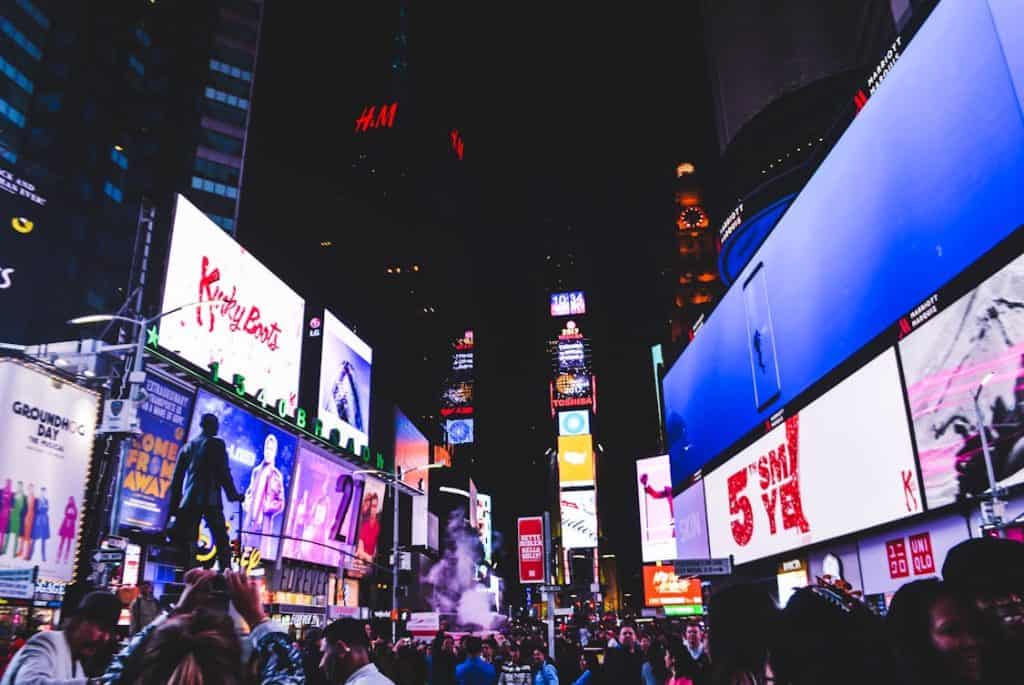Signage refers to the use of visual graphics to convey information and guide the public. From store fronts to directional signs, the role of signages in advertising cannot be overstated.
They are often the first point of contact between a business and its potential customers, establishing the brand’s presence and setting the tone for the overall customer experience.
Types of Signage
Businesses utilize various types of signages to achieve different advertising goals. Indoor and outdoor signs, digital displays, and banners each play a unique role.
Outdoor signs attract foot traffic, while indoor signs guide customers through the store and promote specific products. Digital displays can offer dynamic content, adapting to customer preferences and trends.
Outdoor Signage

Outdoor signages serve as gateways to businesses, providing vital information such as the business name, operating hours, and promotional messages.
A well-placed, illuminated sign can draw in customers even in low-light conditions. These signs often act like billboards, communicating key messages quickly as people pass by.
For high-quality and impactful solutions, many businesses trust Printerra Signs to deliver designs that capture attention and elevate their brand presence.
Indoor Signage
Once customers enter a store, indoor signage helps direct their attention. This type of signage can include promotional displays, wayfinding signs, and even informational posters.
By guiding customers to specific areas or products, businesses can enhance the shopping experience and increase sales.
Digital Signage
Digital signage is increasingly popular for its flexibility. These displays can be updated in real time, allowing businesses to react to current trends or promotions.
For instance, a restaurant might display daily specials on a digital board, enticing customers with fresh options.
The Impact of Signages on Brand Identity
Signages play a pivotal role in shaping brand identity. The design elements, colors, and fonts chosen for a sign are often reflective of the brand’s values and personality.
A luxury brand may opt for sleek, minimalist designs, while a family-friendly business might choose bright colors and playful fonts.
Consistency and Recognition
Consistency in signage across all platforms reinforces brand recognition. When customers see the same logo and color scheme, whether on a physical sign or a digital ad, they develop familiarity and trust.
This recognition can make a significant difference in competitive markets.
Emotional Connection
Effective signage can evoke emotions and create a connection with potential customers. For example, a cozy café might use warm colors and inviting language to make people feel welcome.
This emotional appeal can influence purchasing decisions, leading customers to choose one business over another.
Signage and Customer Behavior
Signages significantly influence customer behavior, often acting as silent salespeople. Studies suggest that a well-placed sign can increase foot traffic and sales.
Directional Influence
Directional signs can ease customer navigation within stores, making the shopping experience more enjoyable. If customers can easily find what they need, they may be more likely to make a purchase.
Conversely, a confusing layout can lead to frustration and lost sales.
Promotional Impact
Promotional signage, such as sale banners or limited-time offers, can create a sense of urgency. When customers see a time-sensitive deal, they may feel compelled to act quickly.
This prompts decisions that might not have occurred otherwise, boosting sales during promotional periods.
Innovative Signage Techniques
In the age of technology, businesses are leaning into innovative signage techniques. From augmented reality to interactive displays, the possibilities are exciting.
Augmented Reality (AR) Signage
AR signage offers a unique, engaging experience for customers. For instance, a retail store might use AR to allow customers to visualize how furniture would look in their homes.
This kind of interactive experience can captivate customers and encourage them to engage with the brand more deeply.
QR Codes and Mobile Integration
The use of QR codes on signage can bridge the gap between physical and digital marketing. Customers can scan codes to access more information, special offers, or even social media platforms.
This integration encourages further interaction and can lead to increased brand loyalty.
Challenges in Signage
While signage is powerful, it comes with its own set of challenges. Understanding and addressing these challenges can help businesses maximize the effectiveness of their signage.
Compliance and Regulations
Different regions have specific regulations regarding signage size, illumination, and placement.
Businesses must navigate these rules to avoid legal issues. This often requires some research and planning to create effective, compliant signage.
Maintenance and Upkeep
Signages also require ongoing maintenance. Weather, wear and tear, and technological issues can lead to degradation over time. Regular inspections and updates ensure that the signage remains effective and visually appealing.
The Future of Signage
As businesses continue to evolve, so too will the role of signage. Trends suggest a shift towards sustainability and eco-friendly materials in signage production.
This aligns with a growing consumer preference for environmentally responsible practices.
Sustainable Materials
Using sustainable materials for signage not only helps the environment but can also enhance brand reputation. Customers are increasingly drawn to businesses that showcase their commitment to sustainability.
For instance, a company that uses recycled materials may attract customers who prioritize eco-friendly choices.
Integration with Smart Technology
The future of signage may also see greater integration with smart technology. Imagine a sign that adjusts its message based on customer demographics or activity.
Such innovations could personalize the shopping experience and drive further engagement.




